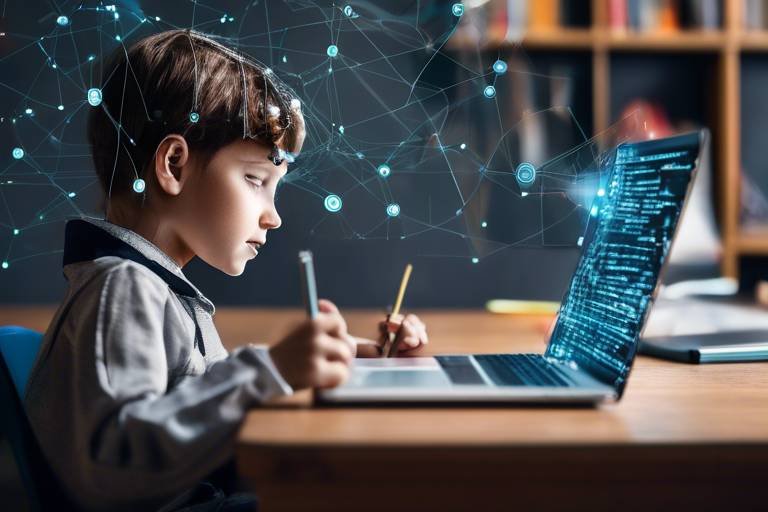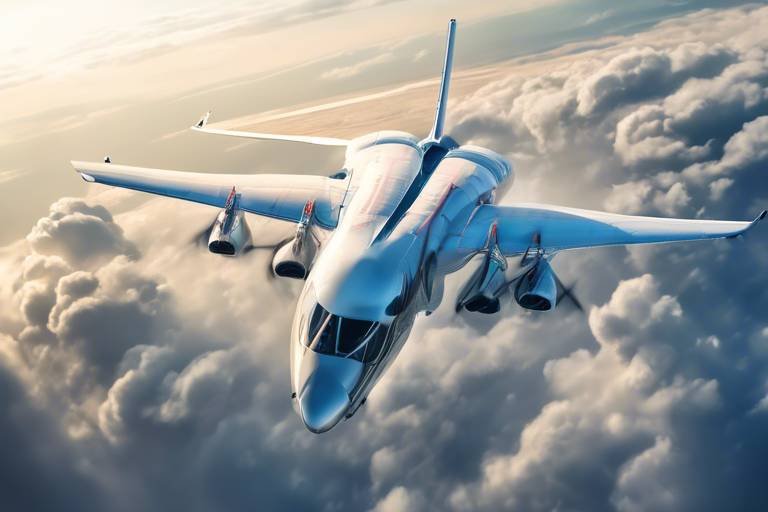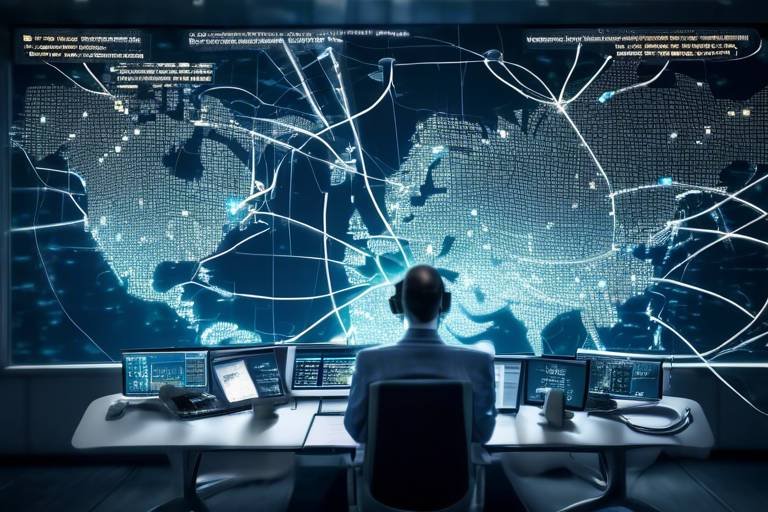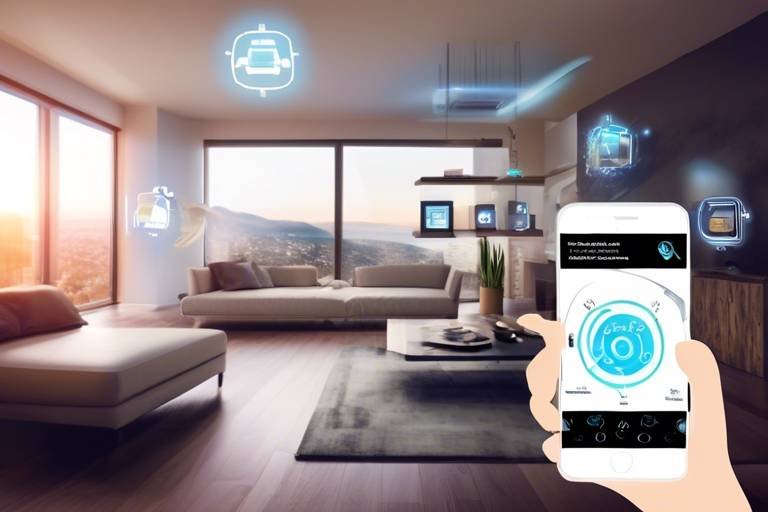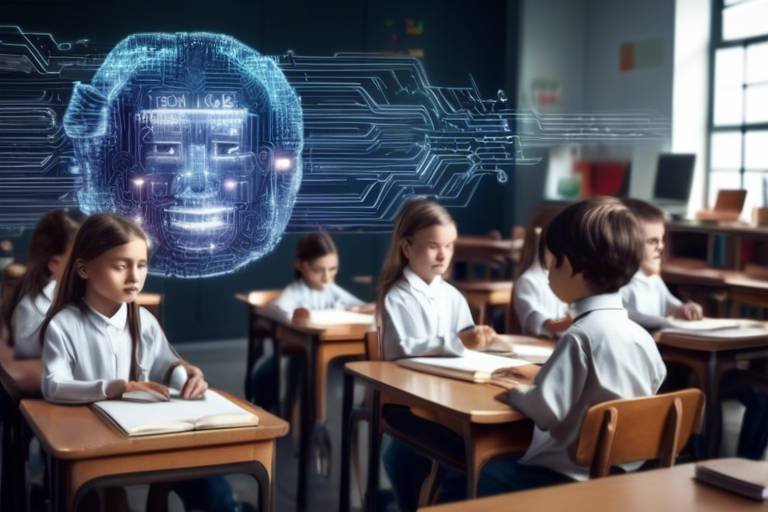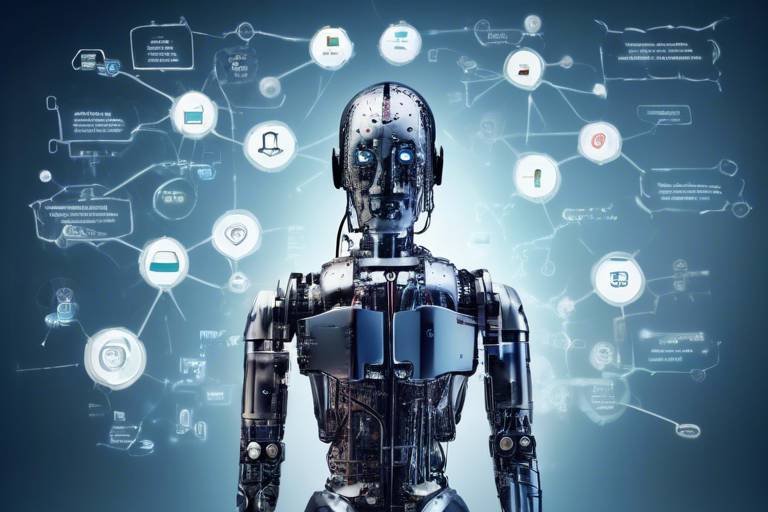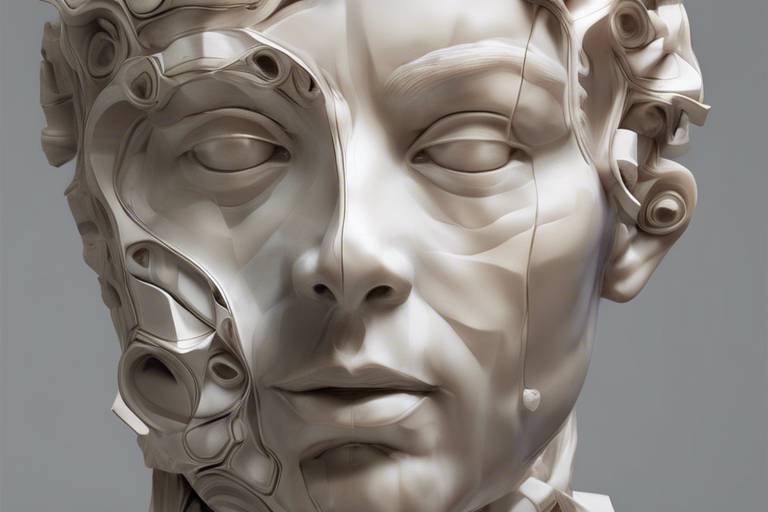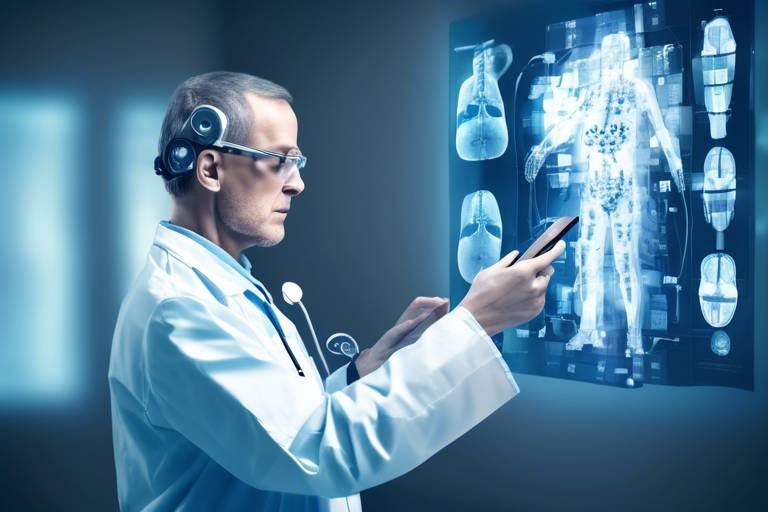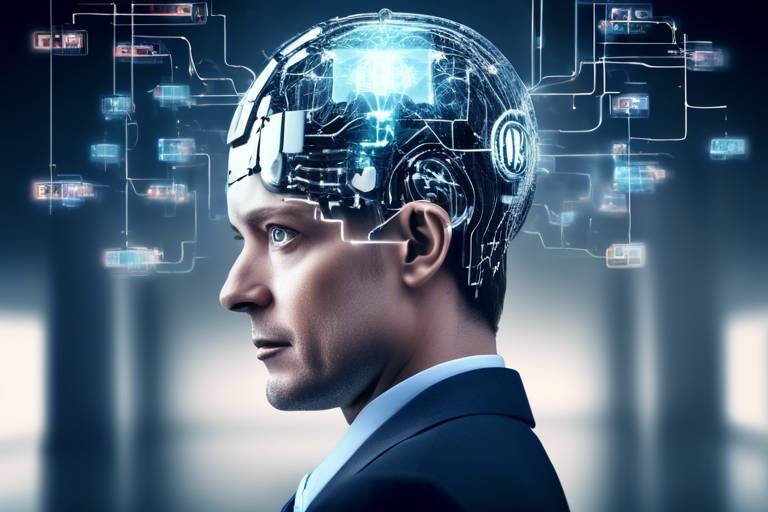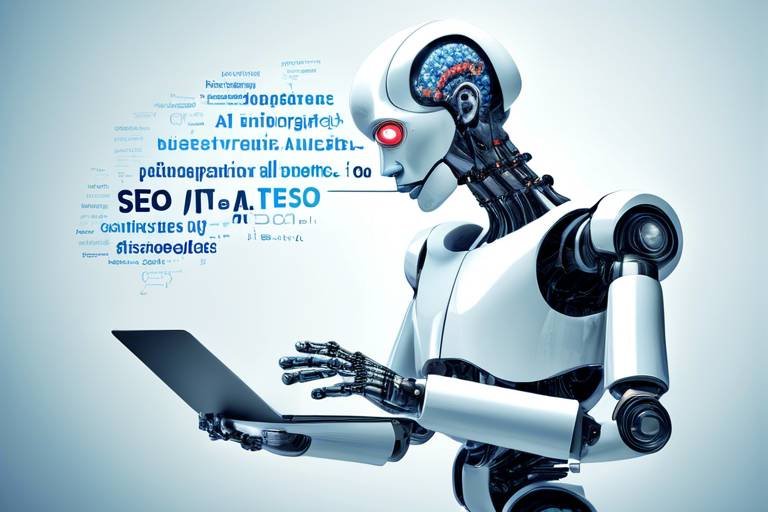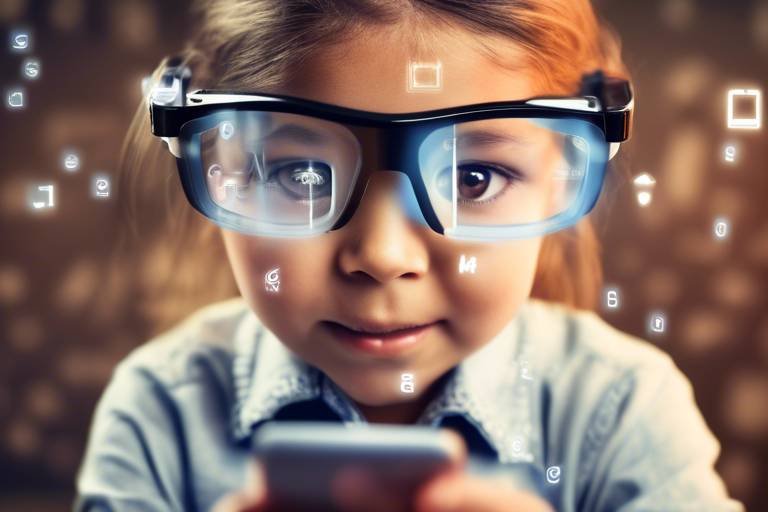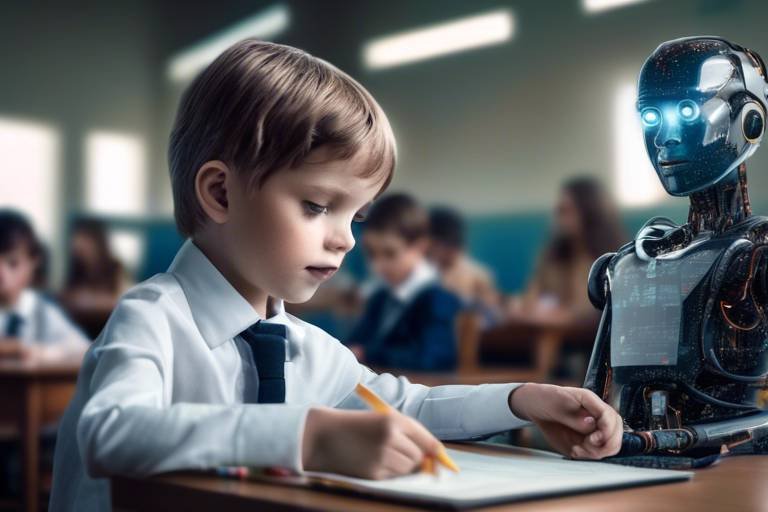Role of AI In Reshaping Performing Arts
The world of performing arts is undergoing a remarkable transformation, thanks to the advent of artificial intelligence (AI). This technology is not just a buzzword; it is a game-changer that is enhancing creativity, streamlining production processes, and challenging traditional notions of artistry. Imagine a stage where lighting, sound, and even choreography are optimized by intelligent algorithms, allowing artists to focus on what truly matters: storytelling and emotional connection. The integration of AI into performing arts is like adding a new brush to an artist's palette—one that opens up a world of possibilities and innovations.
As we delve deeper into this fascinating intersection of technology and creativity, we uncover how AI is reshaping various aspects of the performing arts. From theatre productions that benefit from automated scheduling and design to choreographers who utilize AI to craft groundbreaking dance routines, the influence of AI is both profound and widespread. This article explores these advancements, highlighting the exciting opportunities they present while also addressing the ethical dilemmas that accompany such rapid change.
One of the most intriguing aspects of AI's role in the performing arts is its ability to enhance collaborative creativity. Artists are no longer working in isolation; they are engaging with AI as a creative partner. This partnership can lead to innovative performances that challenge our understanding of authorship and originality. However, with this collaboration comes a set of challenges that provoke essential questions: What does it mean to be creative in an age where machines can generate art? How do we define the boundaries of human and machine contributions?
Additionally, AI is revolutionizing audience engagement. Imagine attending a performance where the show adapts in real-time based on audience reactions. This is no longer a distant dream; it is becoming a reality. AI technologies can analyze viewer preferences and personalize experiences, making each performance unique. As we explore these advancements, it is crucial to consider the implications for traditional practices and the preservation of human artistry.
In conclusion, the role of AI in reshaping the performing arts is multifaceted and dynamic. It presents a thrilling landscape filled with opportunities for innovation while simultaneously raising critical ethical questions. As we embrace this technological revolution, we must also remain vigilant about the values that underpin the arts and ensure that the human touch remains at the heart of every performance.

AI in Theatre Production
Artificial intelligence is revolutionizing the way we approach theatre production. Imagine a world where scheduling conflicts, lighting cues, and sound design are managed with the precision of a well-oiled machine. This is not just a dream; it's happening right now! By automating various production processes, AI allows theatre creators to channel their energies into what truly matters: the art of storytelling and the emotional connection with their audience.
One of the most significant advantages of AI in theatre is its ability to streamline complex tasks. For instance, AI algorithms can analyze scripts and generate detailed production schedules that account for every actor’s availability, rehearsal times, and technical requirements. This not only saves time but also reduces the stress associated with coordinating large teams. Imagine a director who can focus more on the narrative arc instead of juggling calendars!
Moreover, AI is enhancing the technical aspects of theatre production. With intelligent lighting systems, AI can adjust brightness, color, and movement in real-time, responding to the actors' performances and the mood of the scene. This creates a dynamic visual experience that can transform a simple stage into a breathtaking spectacle. For sound design, AI tools can analyze the acoustics of a venue and optimize audio settings to ensure that every note resonates perfectly with the audience.
However, it's essential to recognize that while AI is a powerful ally, it does not replace the human touch. The emotional depth and nuance that actors bring to their performances cannot be replicated by machines. Instead, AI serves as a supportive tool, enhancing the creative process rather than overshadowing it. This partnership between technology and artistry opens up new avenues for innovation in theatre.
As we embrace these technological advancements, we must also navigate the ethical considerations that come with them. Questions arise about the implications of relying too heavily on AI in creative fields. Will we lose the essence of human creativity? How do we ensure that the heart and soul of theatre remain intact? These are pressing concerns that artists and technologists must address as they forge ahead into this brave new world.
In conclusion, the integration of AI in theatre production is not merely a trend; it is a transformation that holds the potential to redefine how we create and experience live performances. By automating mundane tasks and enhancing creative possibilities, AI is paving the way for a more vibrant and dynamic theatre landscape. As we continue to explore this synergy, the future of theatre looks promising, with endless possibilities for innovation and artistic expression.
- How does AI improve theatre production? AI automates scheduling, lighting, and sound design, allowing creators to focus on storytelling.
- Can AI replace human creativity in theatre? No, AI enhances the creative process but cannot replicate the emotional depth of human performers.
- What are the ethical considerations of using AI in theatre? Ethical questions include the impact on human creativity and the potential loss of artistic essence.

AI-Driven Choreography
In the ever-evolving world of dance, is becoming a game changer. Imagine a scenario where choreographers can harness the power of artificial intelligence to create mesmerizing routines that push the boundaries of human movement. This isn't just a futuristic dream; it's happening right now! With AI tools at their fingertips, choreographers are able to explore new dimensions of creativity, blending technology with artistry in ways we never thought possible.
So, how does it all work? AI algorithms analyze vast amounts of dance data, learning from countless performances across various styles. This data-driven approach enables AI to generate unique movement sequences that can inspire choreographers or even serve as the foundation for a new dance piece. Think of it as having a virtual dance partner that never tires, always ready to provide fresh ideas and innovative combinations. The result? An explosion of creativity that can lead to breathtaking performances.
Moreover, the collaboration between human dancers and AI is fostering a new era of artistic expression. For instance, choreographers can input specific parameters or themes into AI software, which then produces a variety of movement options. This allows artists to explore different interpretations of a concept, leading to a richer and more diverse performance. It's like having a brainstorming session with a highly intelligent assistant who never runs out of suggestions!
But let's not forget about the unique collaborative opportunities that arise from this partnership. Dancers can interact with AI-generated choreography in real-time, adapting their movements based on the suggestions and alterations made by the AI. This dynamic interaction creates a synergy that elevates the overall performance, making it a truly collaborative effort between human and machine.
However, as exciting as this technology is, it comes with its own set of challenges. Questions about authorship and originality loom large in the discussion of AI-driven choreography. Who owns the rights to a dance created with the help of AI? Is it the choreographer, the machine, or a combination of both? These questions are essential to consider as we embrace the future of dance technology.
In summary, AI-driven choreography is not just reshaping how we create and perform dance; it's opening up a world of possibilities for artistic exploration. As choreographers and dancers continue to experiment with these tools, we can expect to see performances that are not only innovative but also deeply engaging. The fusion of technology and art is paving the way for a new era in the performing arts, one where creativity knows no bounds.
- What is AI-driven choreography? AI-driven choreography refers to the use of artificial intelligence tools to create, suggest, or enhance dance routines and movements.
- How does AI assist choreographers? AI assists choreographers by analyzing vast amounts of dance data to generate unique movement sequences and providing fresh ideas for choreography.
- Are there ethical concerns with AI in dance? Yes, ethical concerns include issues of authorship, originality, and the implications of using machine-generated content in creative works.
- Can AI replace human choreographers? While AI can enhance the creative process, it is unlikely to replace human choreographers, as the emotional and artistic nuances of dance require human insight and expression.

Collaborative Creativity
In the vibrant world of performing arts, the concept of is taking on a whole new meaning thanks to the integration of artificial intelligence. Imagine a scenario where a choreographer, while working on a dance piece, can tap into an AI system that suggests not only movements but also the emotional undertones that could enhance the performance. This is not just a futuristic dream; it’s becoming a reality. AI can analyze vast amounts of data from existing performances, identify trends, and propose innovative ideas that a human artist might not have considered.
Furthermore, AI systems are evolving to become creative collaborators rather than mere tools. They can generate content, suggest themes, or even create entire scenes, allowing artists to explore new creative directions. For example, a playwright could use AI to brainstorm dialogue or plot twists that resonate with contemporary audiences. This partnership can lead to groundbreaking performances that blend human intuition with machine efficiency.
However, the integration of AI in the creative process is not without its challenges. As artists embrace these technologies, they must navigate complex questions surrounding authorship and originality. If an AI suggests a line of dialogue or a dance move, who owns that creation? Is it the artist, the programmer, or the AI itself? These questions are pivotal as they shape the future of artistic expression and the very essence of creativity.
To illustrate the potential of collaborative creativity, consider the following table that highlights some of the key benefits and challenges of integrating AI in the creative process:
| Benefits | Challenges |
|---|---|
| Enhanced creativity through diverse ideas | Questions of authorship and ownership |
| Increased efficiency in production | Risk of homogenization in art |
| Ability to analyze audience preferences | Ethical implications of machine-generated content |
As we delve deeper into this new era of collaborative creativity, it’s essential to recognize that AI is not here to replace artists; rather, it is a tool that can enhance their capabilities. Just like a painter might use a variety of brushes to achieve different textures, artists can leverage AI to explore uncharted territories in their work. The future holds exciting possibilities where human creativity and artificial intelligence coalesce, leading to performances that not only entertain but also provoke thought and inspire change.
- What is collaborative creativity in the context of AI? Collaborative creativity refers to the partnership between human artists and AI systems, where both contribute to the creative process, leading to innovative artistic expressions.
- How does AI enhance the creative process? AI enhances creativity by providing suggestions, analyzing trends, and generating content, allowing artists to explore new ideas and directions.
- What are the challenges of using AI in the arts? Key challenges include questions of authorship, originality, and the ethical implications of machine-generated content.
- Can AI replace human artists? No, AI is a tool that can enhance human creativity, but it cannot replace the unique intuition and emotional depth that human artists bring to their work.

AI as a Creative Partner
Imagine stepping into a world where your creative partner isn't just another human being but an advanced algorithm capable of generating ideas, suggesting themes, and even composing melodies. is not just a futuristic concept; it's happening right now in the performing arts. Artists across various disciplines are embracing AI's capabilities to enhance their creative processes, resulting in groundbreaking performances that blend human intuition with machine precision.
One of the most fascinating aspects of AI collaboration is its ability to provide alternative perspectives. Artists often find themselves trapped in a cycle of familiar patterns, but AI can introduce unexpected elements into their work. For instance, a playwright might use an AI tool to generate dialogue options, leading to fresh and unpredictable character interactions. This collaboration can spark new ideas and push the boundaries of traditional storytelling.
Moreover, AI can analyze vast amounts of data, from historical art trends to audience reactions, and offer insights that might not be immediately apparent to human creators. This data-driven approach allows artists to make informed decisions, refining their work based on what resonates with audiences. For example, a choreographer might utilize AI to assess which dance movements capture the audience's attention the most, thus tailoring performances to maximize engagement.
Of course, the integration of AI in the creative process does not come without its challenges. Questions about authorship and originality arise when a machine contributes significantly to a piece of art. Who owns the rights to a painting that was partially created by an AI? Is a song composed with AI assistance still considered the artist's original work? These questions require careful consideration as artists navigate their relationships with these powerful tools.
However, the potential for AI to enhance creativity is immense. By acting as a sounding board for ideas, AI can help artists step outside of their comfort zones. For instance, a musician might input a basic melody into an AI program, which then generates variations and harmonies, ultimately leading to a richer composition. This collaborative process not only enriches the final product but also fosters a sense of innovation that keeps the performing arts vibrant and evolving.
In conclusion, AI's role as a creative partner is reshaping the landscape of the performing arts. By providing new perspectives, analyzing data, and generating content, AI empowers artists to explore uncharted territories in their work. As we continue to embrace this technology, the dialogue between human creativity and artificial intelligence will undoubtedly lead to exciting developments in the world of performance.
- How does AI enhance creativity in the performing arts? AI can provide new ideas, analyze audience preferences, and generate content, allowing artists to explore innovative directions.
- What are the challenges of collaborating with AI? Issues of authorship, originality, and the implications of machine-generated content are significant concerns that need to be addressed.
- Can AI replace human artists? While AI can assist and enhance creativity, it cannot replicate the emotional depth and unique perspectives that human artists bring to their work.
- How can artists effectively collaborate with AI? Artists can utilize AI tools for brainstorming, generating variations, and analyzing audience feedback to refine their artistic vision.

Challenges of Collaboration
The integration of AI into the performing arts is not without its hurdles. While the idea of machines collaborating with artists can sound thrilling, it brings forth a host of challenges that need careful consideration. One of the primary concerns revolves around authorship. When an AI tool generates a piece of art or contributes significantly to a performance, who holds the rights to that creation? Is it the artist who provided the initial input, the programmer who designed the AI, or the AI itself? This question of ownership can lead to complex legal and ethical dilemmas.
Additionally, the notion of originality comes into play. If an AI is trained on existing works, how do we define what is truly original? Can a machine really create something new, or is it merely remixing what it has learned? This blurring of lines raises concerns among artists who fear that their unique styles and voices could be diluted by machine-generated content. They might wonder, “Am I competing with a robot?” This fear of being overshadowed could stifle human creativity rather than enhance it.
Moreover, the very essence of human creativity is at stake. Art is deeply personal; it reflects individual experiences, emotions, and perspectives. When we introduce AI into this deeply human process, we risk losing the emotional depth that comes from genuine human expression. Can a machine truly understand the nuances of human feelings? Can it replicate the spark of inspiration that leads to a breathtaking performance? These are questions that artists grapple with as they navigate this new landscape.
Lastly, there is the challenge of trust. How can artists trust AI to enhance their work without overshadowing their vision? The relationship between human creativity and machine intelligence must be one of collaboration rather than competition. Artists need to feel empowered, not threatened, by the technology at their disposal. This necessitates a shift in mindset, where AI is seen as a supportive tool rather than a rival.
In summary, while the collaboration between AI and artists opens up exciting possibilities, it also presents significant challenges that need to be addressed. As we move forward, it is crucial to foster a dialogue that considers both the potential and the pitfalls of this partnership. Only then can we create a harmonious relationship that respects and enhances the artistry of human creators.
- What are the main challenges of AI collaboration in the performing arts?
The main challenges include authorship issues, concerns about originality, the essence of human creativity, and trust between artists and AI. - How can artists maintain their originality when collaborating with AI?
Artists can maintain originality by using AI as a tool for inspiration rather than a replacement for their unique voice, ensuring that their personal experiences and emotions remain at the forefront of their work. - What role does AI play in enhancing creativity?
AI can enhance creativity by offering new perspectives, generating ideas, and assisting in the creative process, allowing artists to explore uncharted territories in their work.

Audience Engagement
In today's fast-paced digital world, has become a pivotal aspect of the performing arts. With the integration of artificial intelligence, artists and producers are discovering new ways to connect with their audiences, making performances not just a passive experience but an interactive journey. Imagine walking into a theater where the lighting adjusts based on your mood, or a musical performance that changes its tempo according to the energy of the crowd. This is not just a fantasy; it’s the reality that AI is helping to create.
AI technologies enable a deeper understanding of audience preferences and behaviors. By analyzing data collected from previous performances, social media interactions, and even ticket sales, AI can predict what resonates most with different demographics. This allows creators to tailor their productions to meet the specific desires of their audiences. For instance, a play might incorporate elements that have historically garnered positive reactions, ensuring a more engaging experience.
Moreover, the emergence of interactive technologies powered by AI has transformed the way audiences participate in performances. Imagine a scenario where audience members can influence the outcome of a story through their smartphones, or where real-time feedback shapes the music being played. This level of interaction not only enhances engagement but also fosters a sense of community among attendees. They become part of the performance, rather than mere spectators.
To illustrate the impact of AI on audience engagement, consider the following table that highlights some key AI-driven innovations:
| Innovation | Description | Impact on Engagement |
|---|---|---|
| Real-time Feedback Systems | Allows audiences to provide instant feedback during performances. | Enhances interactivity and responsiveness of the show. |
| Personalized Content Delivery | Uses data analytics to tailor experiences based on viewer preferences. | Increases relevance and satisfaction of the audience. |
| Virtual Reality Experiences | Creates immersive environments that audiences can explore. | Deepens emotional connection and engagement with the narrative. |
While the benefits of AI in enhancing audience engagement are clear, it’s essential to consider the balance between technology and the human touch. After all, the essence of performing arts lies in the emotional connection between artists and their audience. The challenge is to leverage AI to amplify this connection rather than replace it. As we move forward, the key will be to integrate these technologies thoughtfully, ensuring that they complement the artistry rather than overshadow it.
In conclusion, AI is revolutionizing how audiences engage with the performing arts, transforming passive viewers into active participants. As we embrace these innovations, we must remain vigilant about maintaining the core values of creativity and emotional resonance that make the performing arts so special.
- How is AI changing the way audiences experience performances?
AI allows for personalized and interactive experiences, enabling audiences to influence performances in real-time. - What are some examples of AI technologies used in audience engagement?
Examples include real-time feedback systems, personalized content delivery, and virtual reality experiences. - Can AI replace human creativity in the performing arts?
While AI can assist and enhance creativity, it cannot replace the emotional and artistic nuances that human creators bring to their work.

AI in Music Composition
Artificial Intelligence is making waves in the realm of music composition, fundamentally altering how musicians create and experience music. Imagine a world where a computer can assist in crafting a melody or even compose an entire symphony—this is not just a fantasy, but a reality that is unfolding before our eyes. Musicians today are embracing AI tools to break free from traditional constraints, allowing them to explore new genres and styles that were previously unimaginable. The collaboration between human creativity and machine intelligence is opening doors to innovative soundscapes, pushing the boundaries of what music can be.
One of the most exciting aspects of AI in music composition is the advent of generative music algorithms. These algorithms can analyze vast amounts of musical data and generate original compositions that adapt to various parameters. For instance, they can create music that changes based on the mood of the audience or the tempo of a live performance. This dynamic approach not only enhances the listening experience but also allows composers to experiment with real-time feedback, creating a unique atmosphere for each performance. It’s like having a musical chameleon that changes its colors based on the environment!
Moreover, AI tools can assist musicians in overcoming creative blocks. Picture this: you’re a composer sitting in front of a blank page, struggling to find inspiration. With AI, you can input your ideas, and the algorithm will suggest chord progressions, melodies, or even entire arrangements. This collaboration can spark new ideas and lead to unexpected musical directions. It’s akin to having a brainstorming partner who never runs out of energy or creativity!
However, the integration of AI in music composition does not come without its challenges. As we delve deeper into this technological revolution, we must navigate complex ethical considerations. Questions surrounding copyright and ownership of AI-generated music are becoming increasingly pertinent. Who owns the rights to a composition created by an AI? Is it the programmer, the musician, or the AI itself? These questions spark debates within the music industry and challenge our understanding of creativity.
To illustrate the impact of AI on music composition, consider the following table that highlights some key AI tools currently being utilized by musicians:
| AI Tool | Functionality | Notable Use Cases |
|---|---|---|
| AIVA | Generates original compositions based on user input | Film scores, video game music |
| Amper Music | Allows users to create and customize music tracks | Content creation for videos, podcasts |
| OpenAI's MuseNet | Generates music in various styles and genres | Exploration of classical and contemporary music fusion |
As we look ahead, the future of AI in music composition appears bright yet complex. While these technologies offer exciting opportunities for creativity and innovation, they also necessitate a careful examination of the ethical implications. Musicians and industry professionals must come together to establish guidelines that protect human artistry while embracing the benefits of AI.
- What is AI in music composition? AI in music composition refers to the use of artificial intelligence tools and algorithms to assist musicians in creating original music.
- Can AI compose music independently? Yes, AI can generate music independently, but it often works best in collaboration with human musicians who provide input and direction.
- What are the ethical concerns surrounding AI-generated music? Ethical concerns include copyright issues, ownership of the music, and the potential impact on traditional music creation practices.

Generative Music Algorithms
Generative music algorithms are revolutionizing the way we think about music composition. Imagine a world where the notes you hear are not just the product of a single composer, but rather a dynamic creation that evolves in real-time. This is the essence of generative music, where algorithms create compositions based on a set of rules and inputs, leading to an infinite variety of soundscapes. These algorithms can analyze patterns, harmonies, and rhythms to produce music that resonates with audiences in unique ways.
One of the most exciting aspects of generative music algorithms is their ability to adapt to real-time audience feedback. For instance, during a live performance, the music can change based on the emotional reactions of the audience. If the crowd is energized, the algorithm might introduce faster tempos or more complex rhythms. Conversely, if the mood is more subdued, it could shift to softer melodies and slower beats. This responsiveness creates a truly immersive experience, making each performance distinct and memorable.
Furthermore, generative algorithms can work alongside human musicians, serving as a collaborative partner rather than a replacement. Musicians can input their ideas and preferences into the algorithm, which then generates complementary melodies or harmonies. This collaboration can lead to unexpected and innovative musical outcomes, pushing the boundaries of creativity. For example, a jazz musician might use an algorithm to explore new chord progressions that they wouldn’t have considered otherwise, opening the door to fresh improvisational possibilities.
However, as we embrace these technological advancements, we must also consider the implications of machine-generated content. The question of authorship arises: if an algorithm creates a piece of music, who owns the rights? Is it the programmer, the musician who inputted the data, or the algorithm itself? These ethical considerations are crucial as we navigate the evolving landscape of music creation.
In summary, generative music algorithms represent a fascinating intersection of technology and artistry. They not only enhance the creative process but also challenge our traditional notions of authorship and originality. As we move forward, it will be essential to strike a balance between leveraging these innovative tools and preserving the unique human touch that defines the art of music.
- What are generative music algorithms? They are systems that create music based on programmed rules and inputs, allowing for dynamic and evolving compositions.
- How do generative algorithms enhance live performances? They can adapt the music in real-time based on audience reactions, creating a unique experience for each performance.
- Who owns the rights to music created by algorithms? This is a complex issue, as it raises questions about authorship and ownership involving the programmer, the musician, and the algorithm itself.

Ethical Considerations
As we dive deeper into the world of artificial intelligence in the performing arts, it's crucial to address the that accompany this technological evolution. While AI offers exciting opportunities for creativity and innovation, it also brings forth a myriad of challenges that artists, producers, and audiences must navigate. One of the most pressing issues revolves around copyright and ownership. When AI systems generate music, scripts, or choreography, who owns the rights to these creations? Is it the programmer, the AI itself, or the artists who provided the initial input? This question becomes even murkier when considering the collaborative nature of many artistic projects.
Moreover, the authenticity of art comes into question. If a piece of music or a dance routine is primarily created by an AI, can it still be considered a genuine expression of human experience? This dilemma raises concerns about the potential dilution of human artistry and the unique perspectives that only a living artist can provide. As we embrace these new technologies, we must also reflect on what it means to be an artist in a landscape increasingly dominated by machines.
Another significant concern is the impact on employment. As AI tools become more sophisticated, there is a fear that they might replace human roles in the creative process. While AI can enhance productivity and creativity, it also poses a threat to job security for many artists and technicians in the performing arts. Striking a balance between leveraging AI for efficiency and preserving human jobs is a delicate challenge that the industry must address.
Additionally, the potential for bias in AI algorithms cannot be overlooked. If the data fed into AI systems reflects societal biases, the outputs may inadvertently perpetuate stereotypes or exclude certain narratives. This concern emphasizes the importance of diverse and inclusive data sets in training AI models, ensuring that the technology serves a broad spectrum of voices and stories.
In light of these challenges, it's essential for stakeholders in the performing arts to engage in ongoing discussions about the ethical implications of AI. Establishing guidelines and frameworks for the responsible use of AI can help mitigate risks while allowing artists to explore the innovative possibilities that this technology offers. The future of AI in the arts should be one where creativity flourishes alongside ethical integrity, ensuring that the essence of human expression remains at the forefront.
- What are the main ethical concerns regarding AI in the performing arts?
The primary concerns include copyright and ownership issues, the authenticity of AI-generated art, employment impacts, and potential biases in AI algorithms. - Can AI replace human artists?
While AI can assist and enhance creativity, it is unlikely to fully replace human artists, as the unique human experience and emotional depth are irreplaceable. - How can we ensure AI is used responsibly in the arts?
Establishing guidelines and engaging in discussions about the ethical implications of AI can help promote responsible use in the creative field.

Future of AI in Performing Arts
The future of artificial intelligence in the performing arts is not just a fleeting trend; it is a revolution that promises to redefine how we create, experience, and engage with art. As technology continues to advance at a breakneck pace, the integration of AI tools will likely lead to a new era of artistic expression. Imagine a world where artists collaborate seamlessly with intelligent systems, where creativity knows no bounds, and where performances adapt in real-time to audience reactions. This is not science fiction; it is the emerging reality of the performing arts landscape.
One of the most exciting prospects is the potential for immersive experiences. With AI, performances can become highly interactive, allowing audiences to influence the narrative or even the choreography through their reactions. Think about it: a theater production where your applause could change the outcome of the story, or a dance performance that evolves based on the audience's energy levels. This level of engagement not only enhances the viewer's experience but also creates a dynamic relationship between the performers and the audience.
However, as we embrace these technological advancements, we must also consider the ethical implications that accompany them. Questions surrounding authorship and originality are more pertinent than ever. If an AI system contributes significantly to a piece of art, who holds the copyright? Is it the programmer, the artist, or the machine itself? These are complex issues that will need to be addressed as AI becomes more integrated into the creative process.
Moreover, the preservation of human artistry remains a crucial factor in this evolution. While AI can enhance creativity, it cannot replace the emotional depth and nuance that human artists bring to their work. The challenge lies in finding a balance between leveraging AI's capabilities and maintaining the essence of what makes art truly resonate with people. As we look forward, it will be essential for artists to embrace AI as a tool rather than a replacement, fostering a collaborative relationship where both can thrive.
As we peer into the future, we can envision a performing arts landscape rich with possibilities. The integration of AI is set to:
- Enhance creative processes through collaboration.
- Personalize audience experiences, making performances more relatable.
- Open new avenues for artistic exploration and innovation.
Ultimately, the future of AI in the performing arts is not just about technology; it's about human connection. As artists and audiences navigate this new terrain, the core of artistic expression—storytelling, emotion, and shared experiences—will remain paramount. Embracing AI as a partner in creativity could lead to groundbreaking performances that inspire and challenge us in ways we have yet to imagine.
Q: Will AI replace human artists in the performing arts?
A: No, AI is designed to enhance and support human creativity, not replace it. The emotional depth and unique perspectives of human artists are irreplaceable.
Q: How can AI personalize audience experiences?
A: AI can analyze audience reactions and preferences in real-time, allowing performances to adapt dynamically, creating a more engaging experience tailored to the viewers.
Q: What are the ethical concerns surrounding AI in the arts?
A: Key concerns include authorship, copyright issues, and the implications of machine-generated content, which need to be carefully navigated as technology evolves.
Q: What does the future hold for AI and traditional art forms?
A: The future is likely to see a blend of traditional practices with AI innovations, leading to new forms of expression while preserving the essence of human artistry.
Frequently Asked Questions
- How is AI changing theatre production?
AI is revolutionizing theatre production by automating various tasks such as scheduling, lighting, and sound design. This allows directors and producers to focus more on the creative aspects of storytelling rather than getting bogged down by logistical details.
- Can AI create choreography for dance performances?
Absolutely! Choreographers are now using AI tools to generate innovative dance routines. This technology pushes the boundaries of movement, enabling exciting collaborations between human dancers and machines, resulting in unique performances.
- What does collaborative creativity with AI look like?
Collaborative creativity with AI involves artists working alongside AI systems that suggest ideas and generate content. This partnership can inspire new creative directions and enhance the overall artistic process, leading to groundbreaking performances.
- Are there any challenges in collaborating with AI?
Yes, while AI collaboration is exciting, it raises important questions about authorship and originality. It challenges traditional notions of human creativity in the arts and prompts discussions about the role of technology in artistic expression.
- How does AI enhance audience engagement?
AI technologies personalize audience experiences by predicting viewer preferences and enhancing interactive elements in performances. This creates a more immersive experience, making audiences feel more connected to the art.
- Is AI used in music composition?
Definitely! Musicians are increasingly leveraging AI for music composition. AI enables the creation of original scores and allows composers to explore new genres, expanding the possibilities of musical expression.
- What are generative music algorithms?
Generative music algorithms allow composers to create music dynamically, adapting to real-time audience feedback. This results in a unique listening experience for each performance, making it truly special.
- What ethical concerns arise from AI in music?
The use of AI in music raises several ethical questions, particularly regarding copyright and ownership. As machine-generated content becomes more prevalent, it challenges traditional concepts of creativity and authorship in the music industry.
- What does the future hold for AI in the performing arts?
The future of AI in the performing arts is full of potential! It promises innovative developments, but it will require careful consideration of its impact on traditional practices and the preservation of human artistry.


